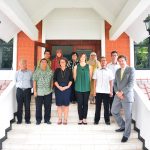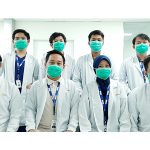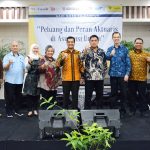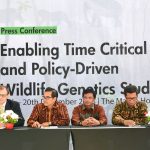Author: Taqyuddin, S.Sc., M.Hum (Geography Teaching Staff of FMIPA UI)
An earthquake with a magnitude of 5 – 7.4 on the Richter scale and followed by earthquakes (less than 5 SR), the end of September 2018 afflicted the people of Donggala, Palu and Sigi. Compounded by the Tsunami and liquefaction so that the death toll (> 1500 people), injuries, property losses and damage to government facilities.
The community is made helpless to avoid it. The government and the Indonesian people work hand in hand to lighten the burden, even international assistance has arrived for rescue, rehabilitation and so on.
Learning and learning to face natural phenomena continuously can not be stopped. How do you take lessons from that event, to be able to continue living in areas affected by the earthquake and Tsunami, to reduce casualties and losses? The concepts of disaster management are already very overlapping, but the concept of searching for safe areas seems to be buried by liquefaction. That should be debated in detail, detail and systematically. Study safe areas in detail, then unsafe areas will be included.
To answer that question, it is not very easy, but it is a lesson demanded by the people of Palu, Sigi, and Donggala. If you want to avoid a tsunami it might be done quickly, with the principle of being far from the coast, but there is still some question if it is applied in the Donggala region which has a land width from west to east no more than 25 km or as an isthmus in Sulawesi.
So Is there a safe place to live in this area? the hypothesis could be: 1. Yes 2. no. (academic assignments for multi- and cross-disciplinary research).
What is done if “there is a safe place” to get on with life?
What do you do if there is “no safe place” to live?
The issue is there and there is no safe place from the tsunami and earthquake in the Republic of Indonesia requires multidisciplinary and cross-disciplinary hard work.
Why is it that spread on social media, mass media reports on areas of danger, threat, disaster? even detailed information. Is the area of danger, disaster, and the threat is a development goal to such detail, of course not, but why is the time is taken up, funds taken up, energy taken up for busy that is not the purpose of development. As if “just look for yourself if you want to be safe living in Indonesia”.
Instead of the mandate of the founder of the country desiring to have humanity, justice, protected, free freedom, intelligent, orderly and peaceful, prosperous and prosperous, this is the narrative chosen and implemented in as much detail as future goals (variable continue), why preoccupied with what is not narrated in the purpose of developing discontinue variables?
As an analogy if you want to be smart, school, you can determine exactly, good, right, and valuable. Is it for smart that we learn in school the opposite things, for example, do not associate with corruptors, do not break the law, do not insult, do not bully, do not be greedy, or this prohibited lesson, prohibited it? narratives of prohibitions, threats, hazards, disasters and so on can lead to achieving development goals. Why we are invited to be more fluent in understanding the dangers and disasters, prohibitions but do not know which is right, right, good and more useful and continue to need to be considered together.
Apart from all that, at this time natural events that teach the inhabitants need to be studied and the data collection is none other than this is a part of the attention to support finding knowledge, understanding of natural phenomena that is reassuring that is finding safe places to carry on life and continue construction.
The FMIPA UI Geography student mapping team incorporated in the UI Peduli Palu went straight to the post-earthquake and tsunami location in Palu. They were divided into two departure teams, the first team departing on 3th– 10th October 2018 namely Anggoro Tri Muldiguno, M. Naufal Fahrisa, Ahmad Fakhruddin, and Abdurrahman Aslam. Followed by the departure of the second team on 10th – 17th October 2018 namely Dymas Trisna, Fatur Rahman Aditya Pratama, Tomi Enjeri Siburian and Muhammad Faris.
The team is expected to work optimally and produce the latest data from recorded phenomena of natural phenomena in the form of maps. This is a very proud first step, at least producing a map of damage to buildings and the environment and helping to determine the right path to facilitate logistics delivery for isolated victims so that they can be moved to a temporary safe place (evacuation).
This work will be complete if it can delineate safe places to carry out the lives of affected communities in a sustainable manner (no or minor development disruption).






